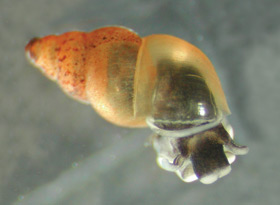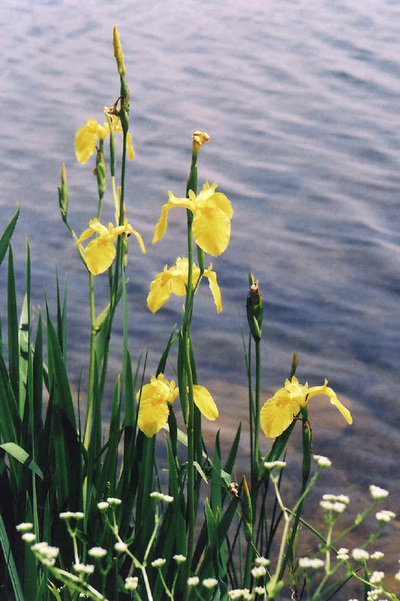Rusty Crayfish

What are they: Rusty Crayfish are a large crayfish with a rusty colored spot on the carapace (section of the behind the head). This gives the crayfish their name. Rusty Crayfish also sometimes develop a rusty color on other areas of shell. Rusty Crayfish can also be identified by their claws, see image to right. The claws also are smooth with very few bumps commonly seen on native crayfish.
Rusty Crayfish grow large (3-5 inches) and grow to that size more quickly than native crayfish. Rusty Crayfish also are voracious eaters which consume more food than native crayfish. Rusty Crayfish lay many eggs which are held on the females tail. They can lay up to 500 eggs at a time.
Rusty Crayfish grow large (3-5 inches) and grow to that size more quickly than native crayfish. Rusty Crayfish also are voracious eaters which consume more food than native crayfish. Rusty Crayfish lay many eggs which are held on the females tail. They can lay up to 500 eggs at a time.

Where are they native: Rusty Crayfish are native to the Allegheny River basin. This means they are native to areas of PA. Rusty Crayfish live in rocky streams and rivers.
How are they spread: It is believed that Rusty Crayfish have been moved as bait. Fisherman may not realize that the crayfish they catch in one stream could be invasive in a stream within driving distance. For this reason they feel it is safe to trap crayfish near their home and use them for bait at their favorite fishing area.
In areas where Rusty Crayfish are invasive they are prolific. These crayfish are a tempting bait source. If used in the area where they are caught the pose little danger to the stream, however moving them even a few miles away can have large impacts. This is especially true if the moved crayfish is a female with eggs.
Where are they currently: Rusty Crayfish have been found in the Susquehanna River, Raystown Lake, and other lakes in Tioga County.
How are they spread: It is believed that Rusty Crayfish have been moved as bait. Fisherman may not realize that the crayfish they catch in one stream could be invasive in a stream within driving distance. For this reason they feel it is safe to trap crayfish near their home and use them for bait at their favorite fishing area.
In areas where Rusty Crayfish are invasive they are prolific. These crayfish are a tempting bait source. If used in the area where they are caught the pose little danger to the stream, however moving them even a few miles away can have large impacts. This is especially true if the moved crayfish is a female with eggs.
Where are they currently: Rusty Crayfish have been found in the Susquehanna River, Raystown Lake, and other lakes in Tioga County.
How to prevent them: Live crayfish should not be moved between streams, even if you are not moving them far. Only use crayfish in the waterway they were caught in, or buy crayfish from a reputable bait store.
You should also clean all gear that comes in contact with water to remove any small crayfish. Water from live wells and bilges should be removed before leaving a water body.
You should also clean all gear that comes in contact with water to remove any small crayfish. Water from live wells and bilges should be removed before leaving a water body.






